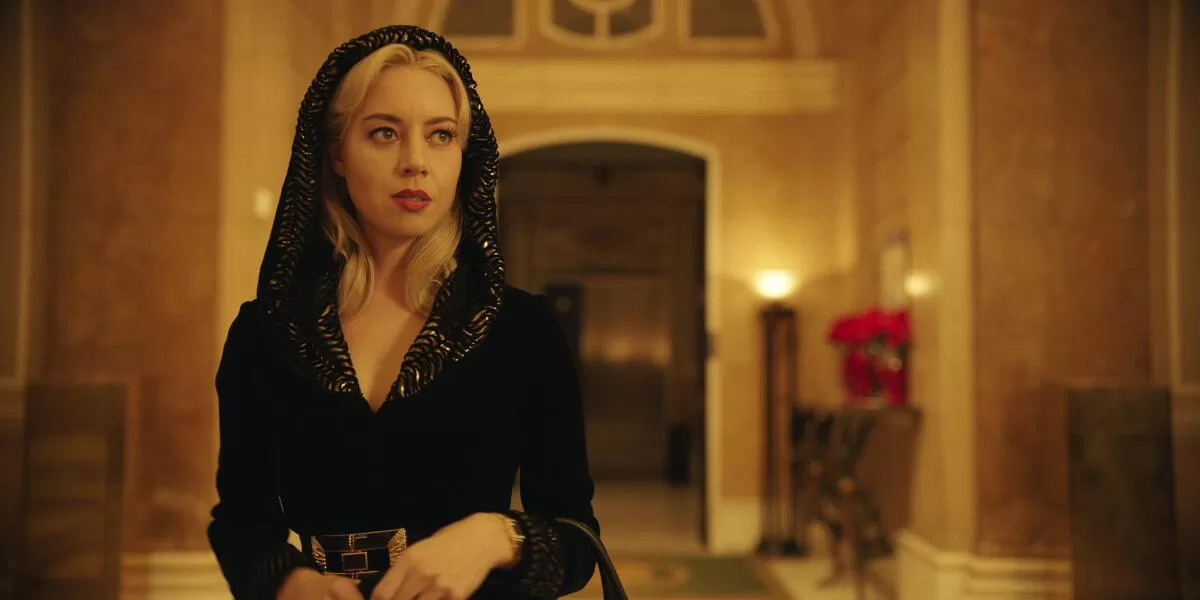Hello! I’m Mark Olsen. Welcome to another edition of your regular field guide to a world of Only Good Movies.
I’d like to begin this week with a few more words about Francis Ford Coppola’s “Megalopolis.” The movie opened last weekend and pretty much flamed out with audiences. A decades-in-the-making passion project that the 85-year-old filmmaker spent a reported $120 million of his own money to realize, the movie brought in only $4 million at the box office.
As Ryan Faughnder wrote in a consideration of the response to the film: “And yet, shouldn’t we be kind of happy that it exists? … Disasters like this used to bankrupt studios. With ‘Megalopolis,’ it’s hard to see who’s hurt by the failure, other than Coppola’s estate.”
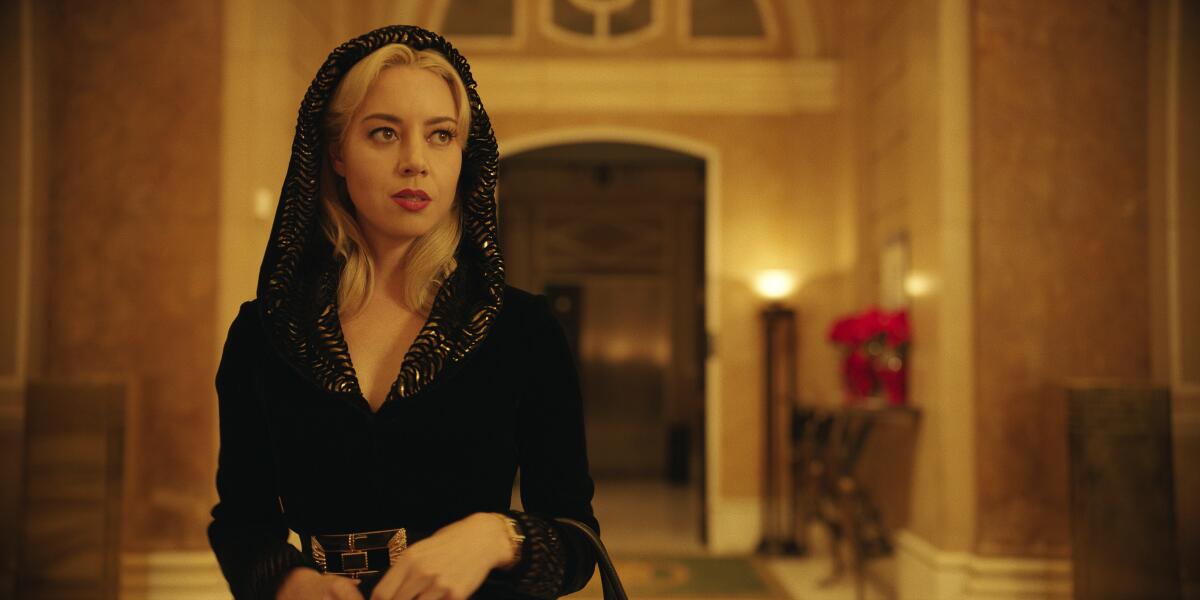
Aubrey Plaza as Wow Platinum in the movie “Megalopolis.”
(Lionsgate)
I went back and saw the film for a second time over the weekend, in full-on IMAX at the Chinese Theatre in Hollywood. It left me feeling totally revitalized and inspired. The audience was surprisingly with the movie all the way through as well, laughing at times, falling into rapt silence at others, even as there was an air of uncertainty as to where it was all going or even what it might mean. It is a movie of big ideas and outsized ambitions that also doesn’t always take itself too seriously, rife with a playful spirit.
There’s a scene between just Aubrey Plaza and Adam Driver that for me summarizes the film’s startling, vivid liveliness. Plaza’s power-hungry character Wow Platinum has been attempting to seduce Adam Driver’s Cesar Catilina and there is something silly and a bit absurd about it, but then in an instant she shifts to an incredibly earnest and raw declaration of love. And to me, that is what the film is, constantly evolving, keeping the viewer engaged, willing to go big and potentially embarrass itself. The sense of creativity and imagination fully opened up gives the film an energy like few others.
The film builds toward a consideration of what the future might be — the final image is of an infant — and we simply have to allow for cinema culture, if not always the business of movies, to hold space for works of boldness and audacity like “Megalopolis.” We should all only hope to have more of them, and to be so free.
Ed Wood is more than ‘the world’s worst filmmaker’
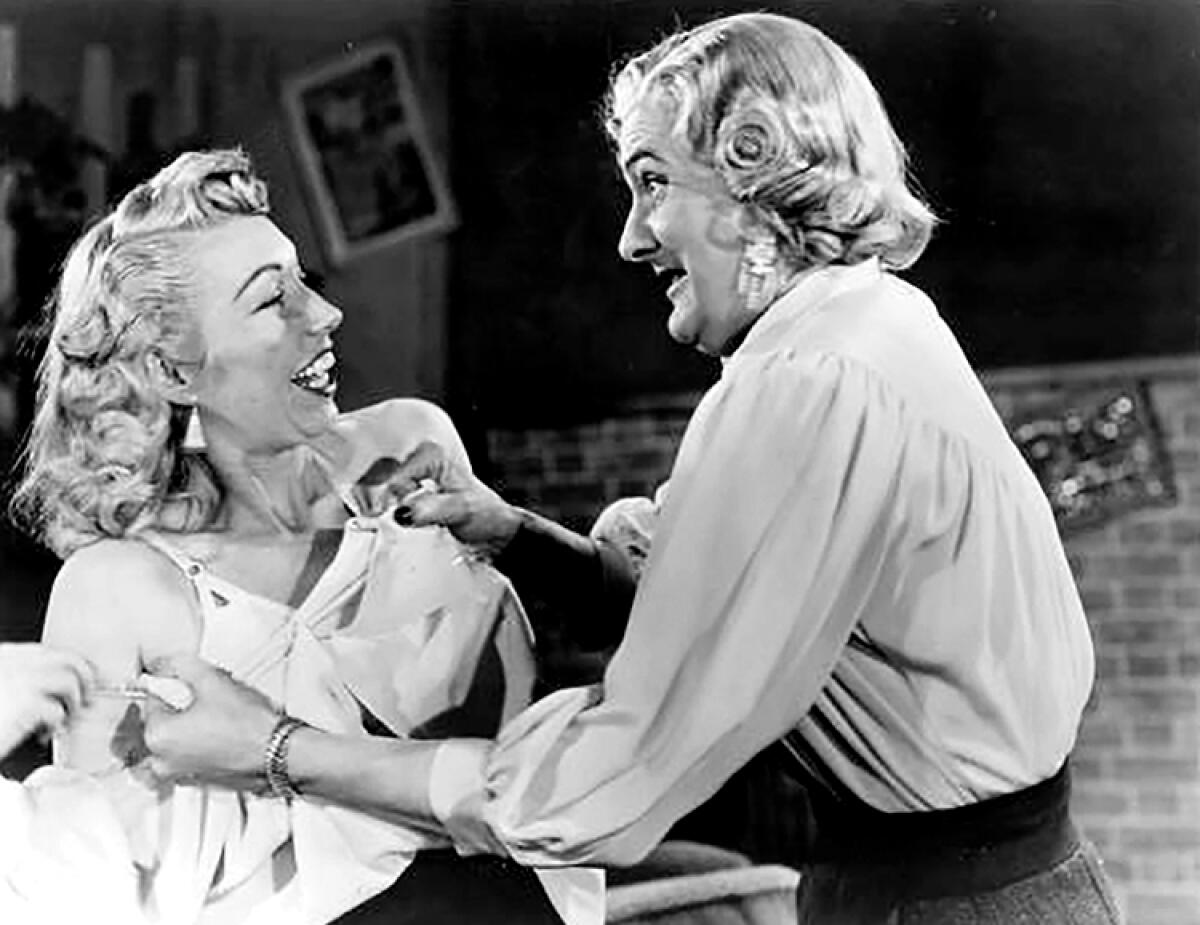
Dolores Fuller, left, and Ed Wood in a scene from the 1953 movie “Glen or Glenda.”
(Wade Williams Distribution)
The American Cinematheque is celebrating the centennial of filmmaker Ed Wood, Jr., born Oct. 10, 1924 in Poughkeepsie, N.Y., with a series running Oct. 10 through Halloween. Notoriously dubbed “the worst filmmaker of all time”, Wood was of course celebrated in Tim Burton’s 1994 “Ed Wood” and has seen his reputation revived somewhat, but his work is perhaps still more talked about than actually seen. When Wood died in obscurity in 1978, he did not receive an obituary in The Times.
The series will open with Wood’s best-known film, 1957’s “Plan 9 from Outer Space,” about an alien invasion of Earth. Comedian and filmmaker Bobcat Goldthwait, whose directorial work includes “Shakes the Clown” and “World’s Greatest Dad,” will introduce the screening along with author Harry Medved.
“I think ‘Plan 9’ is the gateway drug for anyone,” said Goldthwait in an interview this week of how he got first into Wood’s work after seeing the film as a midnight movie. “I saw it and then I was obsessed with it, like anybody. Because that’s the thing, Ed Wood is not the worst filmmaker. I have a soft spot for him because I feel a lot like him, in a way. I’m making these small movies that no one’s asking to be made. Ed is the patron saint for us nuts that go out and make low-budget movies with their friends. I think Ed’s movies are really imaginative and they’re very personal.”
Goldthwait has a tattoo of Wood and is in fact working alongside his friend, comedian and writer Dana Gould, to finish the 1969 Wood project “Operation Redlight” from 40 minutes of footage they were able to acquire.
“It kind of fell off a truck,” said Goldthwait. “I’m not in a position to say how I got it, but I got it in a way Ed would’ve been really proud of.”
He added: “We’ve talked to people who were his friends, we’ve talked to people that he stayed at their houses and things like that, and some actors that worked with him, and the great thing about him is that these people speak about him in affectionate tones. It’s really nice to be obsessed with somebody who, when you dig around, you just find people really did like him.”
Wood’s spooky 1959 film “Revenge of the Dead” (also known as “Night of the Ghouls”) will also screen in the series, with an introduction by Jason Insalaco, nephew of Ed Wood character actor Paul Marco. Also showing is Wood’s little-seen 1970 film “Take It Out in Trade,” which has been described as a “surreal detective comedy” in line with the works of John Waters and Russ Meyer.
The series concludes with Wood’s 1953 “Glen or Glenda” in which the director himself plays a man who begins to dress as a woman. The screening will be introduced by Bob Blackburn, co-custodian of the Ed Wood estate, and will also feature a screening of the never-before-seen “The Adventures of Ed & Kathy & George & Fran.”
“I think [‘Plan 9’] is his best movie, but I would say ‘Glen or Glenda’ is his more personal movie,” said Goldthwait. “I think that’s him asking for acceptance.”
Road movies
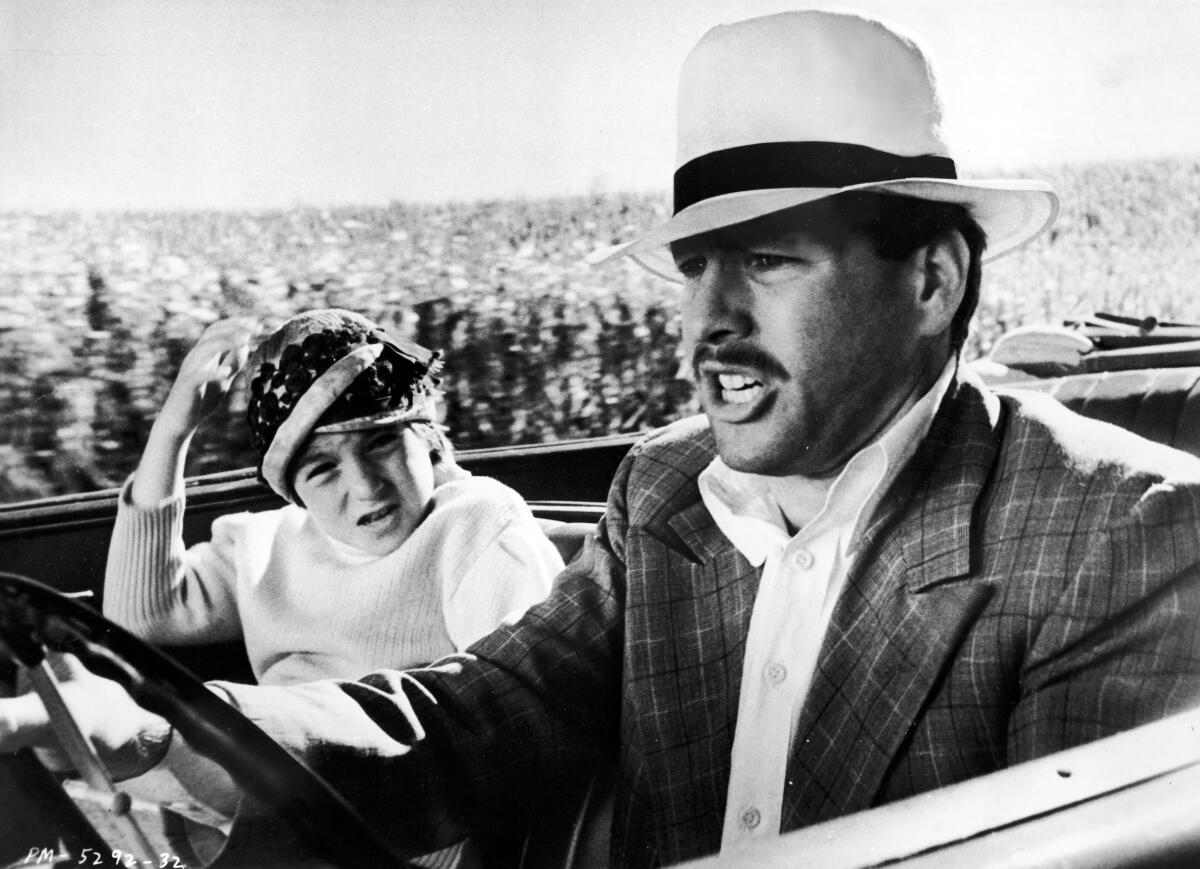
Tatum O’Neal and Ryan O’Neal in Peter Bogdanovich’s “Paper Moon.”
(Paramount Pictures)
To go along with the film “Will & Harper,” in which Will Ferrell goes on a road trip with his old friend Harper Steele, the Egyptian and Bay Theaters in Los Angeles (as well as the Paris in New York City) will feature a series of road movies beginning Wednesday and running into December.
On Oct. 9, the Egyptian will show Frank Capra’s 1934 “It Happened One Night,” starring Clark Gable and Claudette Colbert, along with Peter Bogdanovich’s 1973 “Paper Moon” starring Ryan O’Neal and Tatum O’Neal.
Other films in the series will include Preston Sturges’ “Sullivan’s Travels,” Joel and Ethan Coen’s “O Brother, Where Art Thou?,” Ridley Scott’s “Thelma & Louise,” David Lynch’s “Wild at Heart,” Gus Van Sant’s “My Own Private Idaho” in 35mm, Alexander Payne’s “Sideways,” John Hughes’ “Planes, Trains and Automobiles” and Stanley Donen’s “Two for the Road.”
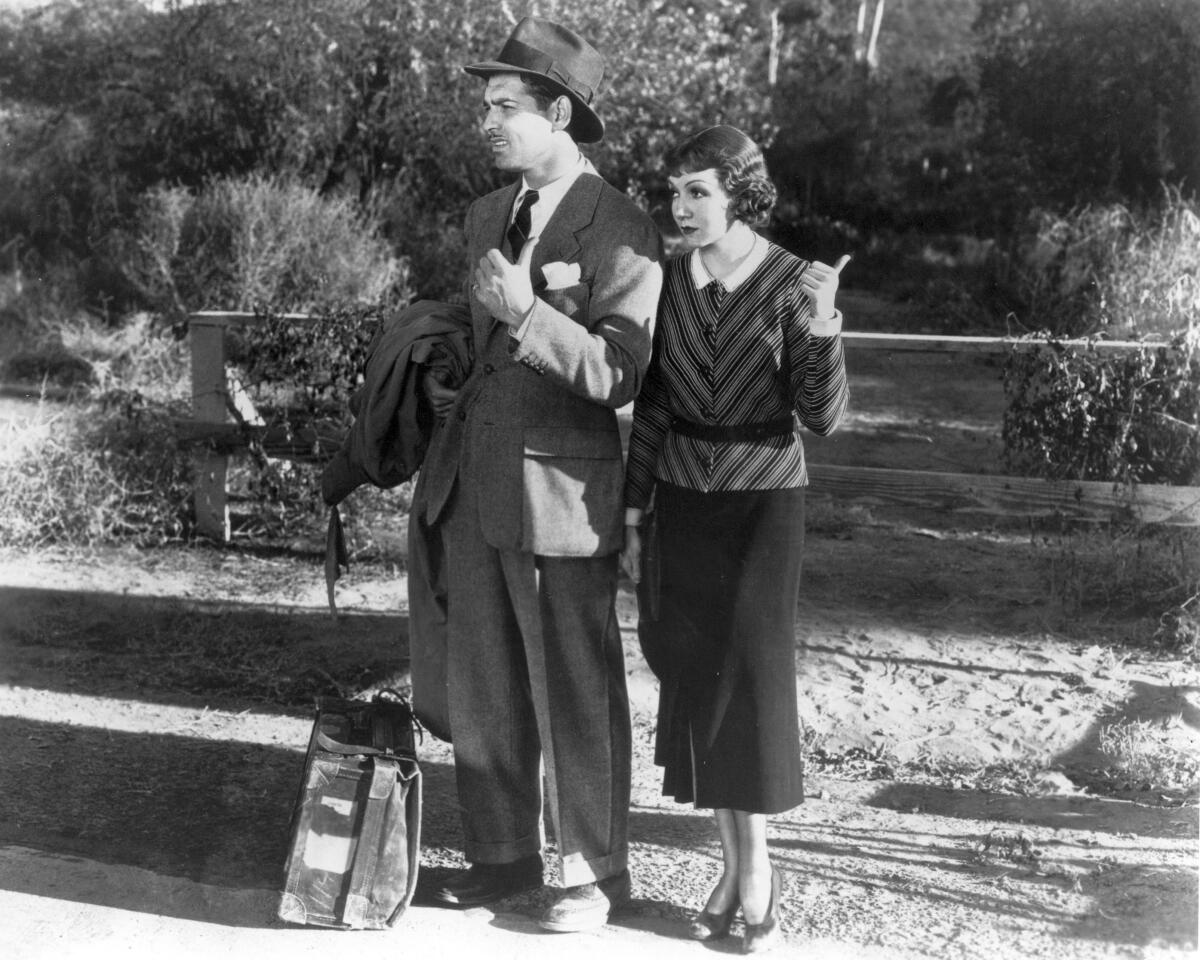
Clark Gable and Claudette Colbert in the movie “It Happened One Night.”
(Columbia Pictures)
Tatum O’Neal won the Academy Award for supporting actress for her screen debut in “Paper Moon” at age 10, making her still the youngest Oscar winner ever. In the film, Ryan O’Neal plays a traveling salesman and low-level con artist making his way across the Midwest in the 1930s, with his daughter (Tatum O’Neal) in tow.
In his original review of the film, Times critic Charles Champlin wrote that “there is no one quite so irresistible as a beguiling child star. … What sets [Tatum O’Neal] apart from television’s juveniles and from the few young movie folk who have come along is a kind of innocent wickedness which leans as much toward the wickedness as toward the mischief she gets into; she is right with Mark Twain’s young men in her premature awareness that not everything is OK with the world and that there is in fact evil, greed, lust and other grownup diversions.”
In a genuinely adorable Times profile by Mary Murphy of the real-life father-daughter pair from May 1973, young Tatum asks the journalist, “Did you see my movie?” to which Ryan retorts, “Your movie! Oh. It’s your movie. My God. How quickly you forget.”
Points of interest
Guy Maddin’s ‘Rumours’ and more

From left, Roy Dupuis, Rolando Ravello, Charles Dance, Cate Blanchett, Denis Ménochet, Nikki Amuka-Bird and Takehiro Hira in the movie “Rumours.”
(Bleecker Street)
The American Cinematheque is putting on a tribute to Canadian filmmaker Guy Maddin from Oct. 5 to 7, including a screening of his latest film, “Rumours,” a satire set during a G-7 summit co-directed with Evan Johnson and Galen Johnson. The cast includes Cate Blanchett, Alicia Vikander, Charles Dance, Nikki Amuka-Bird and Denis Ménochet. The filmmakers will be in person throughout the weekend.
Other titles screening include “The Green Fog,” “The Saddest Music in the World,” “Brand Upon the Brain!,” “My Winnipeg” and “The Forbidden Room.
In other news
AFI Fest program announced

An image from the 2024 documentary “No Other Land,” which looks at the Palestinian-Israeli conflict.
(AFI Fest)
AFI Fest revealed their program for this year’s festival this week. Running Oct. 23–27, the showcase will close with the world premiere of Clint Eastwood’s new “Juror #2” starring Nicholas Hoult. The festival will bring lots of titles to L.A. for the first time from the international festival circuit, including films that premiered at Sundance, Berlin, SXSW, Tribeca, Venice, Telluride and New York.
Just a few highlights include Jesse Eisenberg’s “A Real Pain,” Pablo Larraín’s “Maria,” Athina Rachel Tsangari’s “Harvest,” Alex Ross Perry’s “Pavements,” Maisie Crow and Abbie Perrault’s “Zurawski v Texas,” Alonso Ruizpalacios’ “La Cocina,” David Cronenberg’s “The Shrouds”, Mike Leigh’s “Hard Truths,” Chris Smith’s “Devo,” Mati Diop’s “Dahomey” and “No Other Land,” a documentary made by a collective of Palestinian and Israeli filmmakers, Basel Adra, Hamdan Ballal, Yuval Abraham and Rachel Szor.
Tejano filmmaking

A scene from “Going Varsity in Mariachi,” directed by Alejandra Vasquez and Sam Osborn.
(Sundance Institute)
For De Los, Luis G. Rendon wrote about a wave of Tejano documentaries that have come out recently and can be found on streaming platforms including PBS, Max and Netflix. Films such as “Hummingbirds,” “The Chicano Squad,” “Going Varsity in Mariachi” and “As I Walk Through the Valley” convey the experience of Tejano communities in ways that go beyond simply telling stories of immigration and politics.
“Those of us who grew up near the border and who are intimately familiar with the cross-cultural exchange that is so inherent of living on the border are like, ’Hey, that’s not the only story, that’s not the only side to this,” said Alejandra Vasquez, one of the directors of “Going Varsity in Mariachi,” the story of a high school’s music program.
